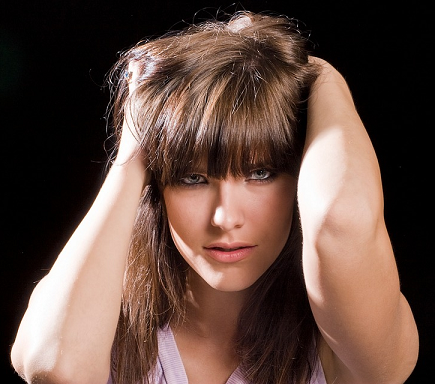Hairfall (Alopecia) or loss of hair is a common complaint in men and women alike. Physical stress like surgery, major illness, child birth, rapid weight change, crash dieting, or severe emotional stress can cause hair to loosen. Handfuls of hair may come out when combing or washing your hair or even after gentle tugging. Sudden or excessive hair loss can signal an underlying medical condition that requires treatment.
Hair Thinning The most common cause of hair loss is a hereditary condition called male-pattern baldness or female-pattern baldness. It usually occurs gradually and in predictable patterns — a receding hairline and bald spots in men and thinning hair on the top of the scalp in women. Heredity also affects the age at which you begin to lose hair, the rate of hair loss and the extent of baldness.
Alopecia Areata This occurs when the body's immune system attacks hair follicles — causing sudden hair loss that leaves smooth, roundish bald patches on the skin. The scalp is the most commonly affected area, but the beard, eyebrows, eyelashes or any hair-bearing site can be affected alone or together with the scalp .Alopecia areata is most common in people younger than 20, but children and adults of any age may be affected.
Dandruff is a common scalp condition in which small pieces of dry skin flake off of the scalp. If you have dark hair or you’re wearing dark colours, you may notice the flakes in your hair or on your shoulders. Dandruff may also causing itching on the scalp and may also cause hairfall.
The exact cause of dandruff is not known but it may be due to a fungus called ' Malassezia', which lives on the scalps of most adults. But, for some, it irritates the scalp and can cause more skin cells to grow, appearing as white scales or flakes.
Sometimes, dandruff may be severe causing red, greasy skin covered with flaky white or yellow scales called as ' Seborrheic dermatitis'. This affects not only the scalp, but may affect other areas rich in oil glands, such as eyebrows, the sides of nose and the backs of ears, chest, groin area and armpits.
The good news is that dandruff usually can be controlled. Mild cases of dandruff may need nothing more than daily shampooing with a gentle cleanser. More-stubborn cases of dandruff often respond to medicated shampoos containing ketoconazole, zinc pyrithione, salicylic acid, coal tar etc.

Trichology Concerns
Hairfall (Alopecia) or loss of hair is a common complaint in men and women alike. Physical stress like surgery, major illness, child birth, rapid weight change, crash dieting, or severe emotional stress can cause hair to loosen. Handfuls of hair may come out when combing or washing your hair or even after gentle tugging. Sudden or excessive hair loss can signal an underlying medical condition that requires treatment.

Hair Thinning The most common cause of hair loss is a hereditary condition called male-pattern baldness or female-pattern baldness. It usually occurs gradually and in predictable patterns — a receding hairline and bald spots in men and thinning hair on the top of the scalp in women. Heredity also affects the age at which you begin to lose hair, the rate of hair loss and the extent of baldness.
Alopecia Areata This occurs when the body's immune system attacks hair follicles — causing sudden hair loss that leaves smooth, roundish bald patches on the skin. The scalp is the most commonly affected area, but the beard, eyebrows, eyelashes or any hair-bearing site can be affected alone or together with the scalp .Alopecia areata is most common in people younger than 20, but children and adults of any age may be affected.

Dandruff is a common scalp condition in which small pieces of dry skin flake off of the scalp. If you have dark hair or you’re wearing dark colours, you may notice the flakes in your hair or on your shoulders. Dandruff may also causing itching on the scalp and may also cause hairfall.
The exact cause of dandruff is not known but it may be due to a fungus called ' Malassezia', which lives on the scalps of most adults. But, for some, it irritates the scalp and can cause more skin cells to grow, appearing as white scales or flakes.
Sometimes, dandruff may be severe causing red, greasy skin covered with flaky white or yellow scales called as ' Seborrheic dermatitis'. This affects not only the scalp, but may affect other areas rich in oil glands, such as eyebrows, the sides of nose and the backs of ears, chest, groin area and armpits.
The good news is that dandruff usually can be controlled. Mild cases of dandruff may need nothing more than daily shampooing with a gentle cleanser. More-stubborn cases of dandruff often respond to medicated shampoos containing ketoconazole, zinc pyrithione, salicylic acid, coal tar etc.